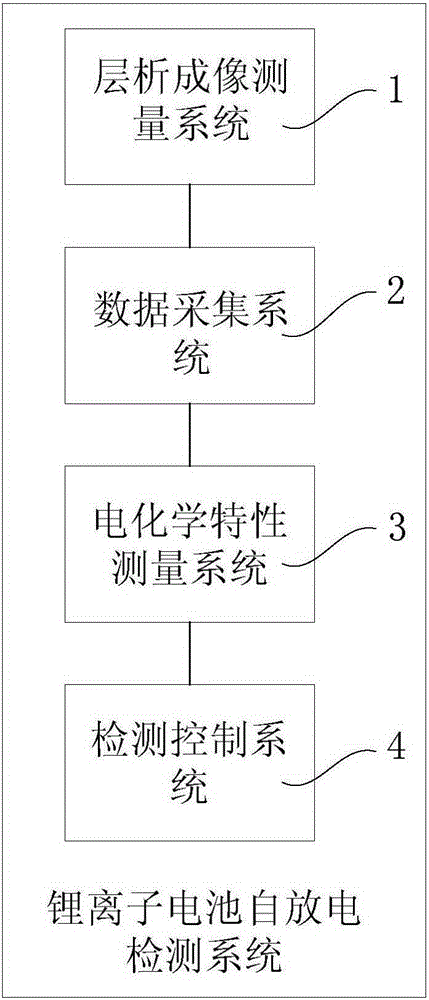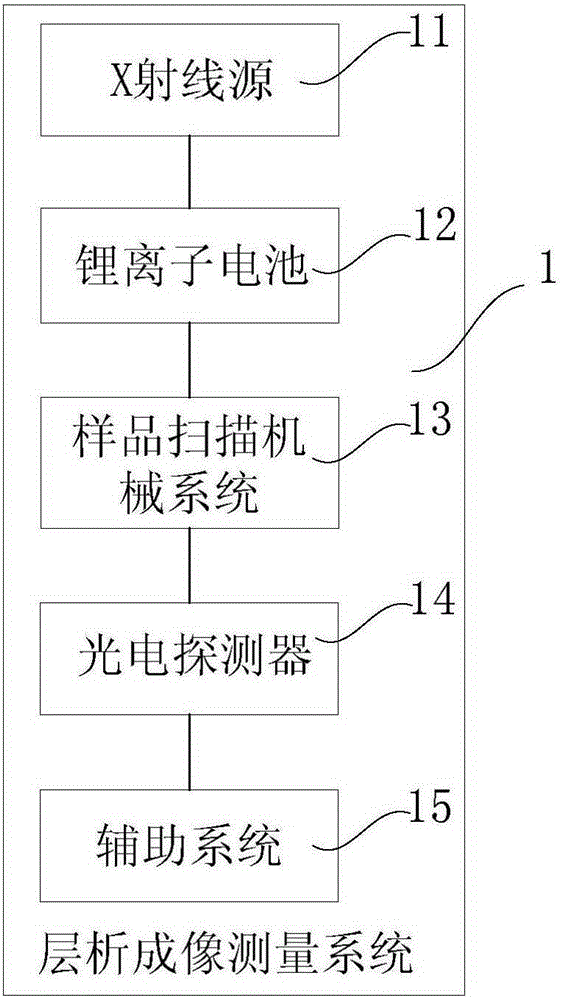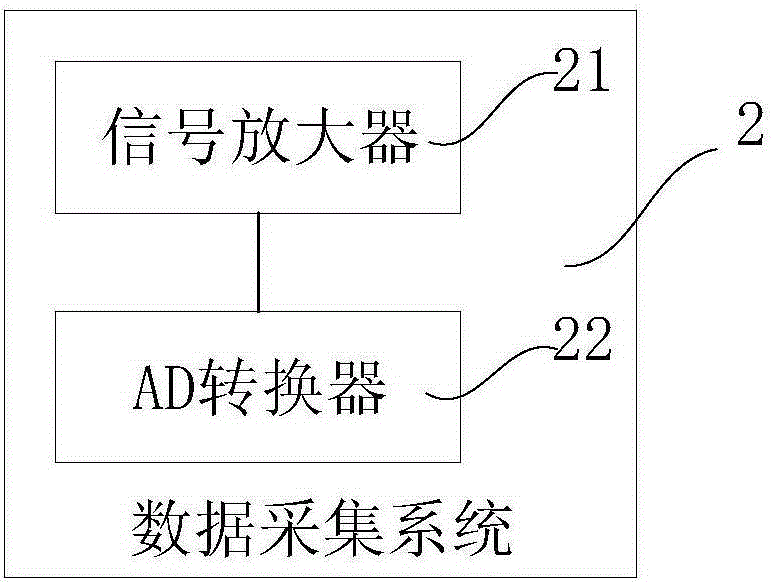Self-discharging detection system for lithium ion battery
A technology of lithium-ion battery and detection system, applied in the field of lithium-ion battery self-discharge detection system, can solve the problems of narrow observation range, long measurement period, poor data reliability, etc.
- Summary
- Abstract
- Description
- Claims
- Application Information
AI Technical Summary
Problems solved by technology
Method used
Image
Examples
Embodiment Construction
[0035] A lithium-ion battery self-discharge detection system proposed in this patent is described as follows in conjunction with the accompanying drawings:
[0036] see figure 1 , A lithium-ion battery self-discharge detection system, including a tomography measurement system 1, a data acquisition system 2, an electrochemical characteristic measurement system 3, and a detection control system 4.
[0037] Such as figure 2 , the tomography measurement system 1 includes an X-ray source 11, a lithium-ion battery 12, a photodetector 13, a sample scanning mechanical system 14, and an auxiliary system 15 (such as an auxiliary power supply and a radiation safety system, etc.), for obtaining and rebuilding lithium Complete data required for 3D tomographic imaging of ion batteries.
[0038] Such as image 3 , the data acquisition system 2 includes a signal amplifier 21 and an AD converter 22, which are used to amplify and AD convert the signal output from the photodetector 13.
[0...
PUM
 Login to View More
Login to View More Abstract
Description
Claims
Application Information
 Login to View More
Login to View More - R&D
- Intellectual Property
- Life Sciences
- Materials
- Tech Scout
- Unparalleled Data Quality
- Higher Quality Content
- 60% Fewer Hallucinations
Browse by: Latest US Patents, China's latest patents, Technical Efficacy Thesaurus, Application Domain, Technology Topic, Popular Technical Reports.
© 2025 PatSnap. All rights reserved.Legal|Privacy policy|Modern Slavery Act Transparency Statement|Sitemap|About US| Contact US: help@patsnap.com



